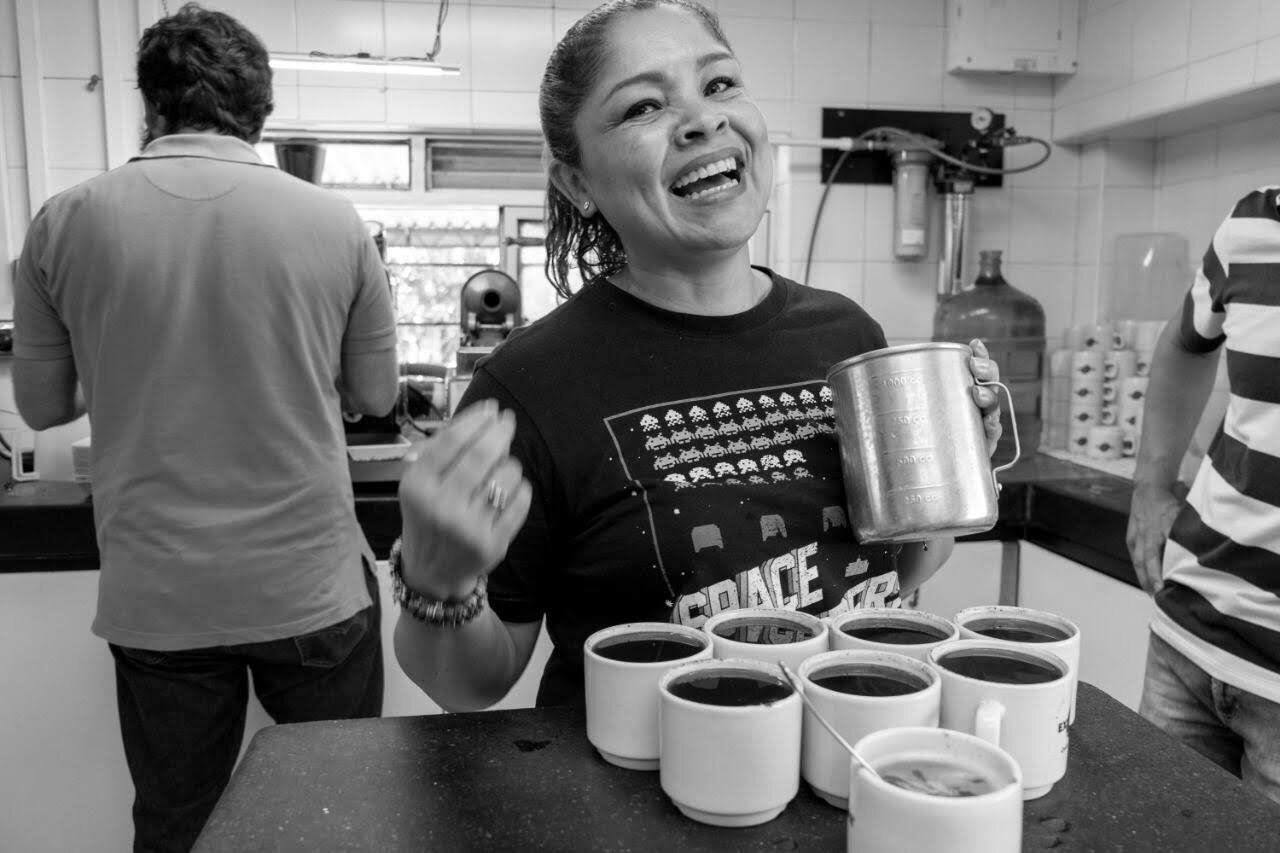COLOMBIA
Empowering women in coffee producing regions through cupping and QC
In Colombia, we have found that building cupping labs at associations, mills, and farms is effective across many dimensions.
Cathe Ocampo preparing a cupping at El Fénix’s cupping lab
Cupping facilities allow for producers and roasters to draw closer through how they discuss coffee quality.
In rural areas they crack open the black box of price and quality. However, the most important aspect we’ve observed is that, in cultures where the power dynamic favours men to a large degree, cupping labs act as an on-ramp to influential roles for women without much resistance. We’ve observed that men almost universally shy away from cupping spaces upon launch. Our working hypothesis is that this is due to it resembling a kitchen. Women and the younger generation tend to put themselves forward to train as cuppers without challenge.
Olga Lucia Botero Hernandez, Cafe y Procesos
The most important aspect we’ve observed is that, in cultures where the power dynamic favours men to a large degree, cupping labs act as an on-ramp to influential roles for women without much resistance.
We are careful to promote the group-level benefits when championing labs, rather than the personal, as the current natural uptake of these roles by women is very beneficial long-term and we want to maintain this trend. A couple of years after establishing a lab, the status of cuppers has changed. They become those consulted for feedback on quality.
They are regularly heard from in meetings about the association’s progress. When baristas and roasters visit, guests initially have more in common with cuppers than with farmers, and so the potential to make links to new opportunities swings in favour of demographics previously last to be heard, if at all.


